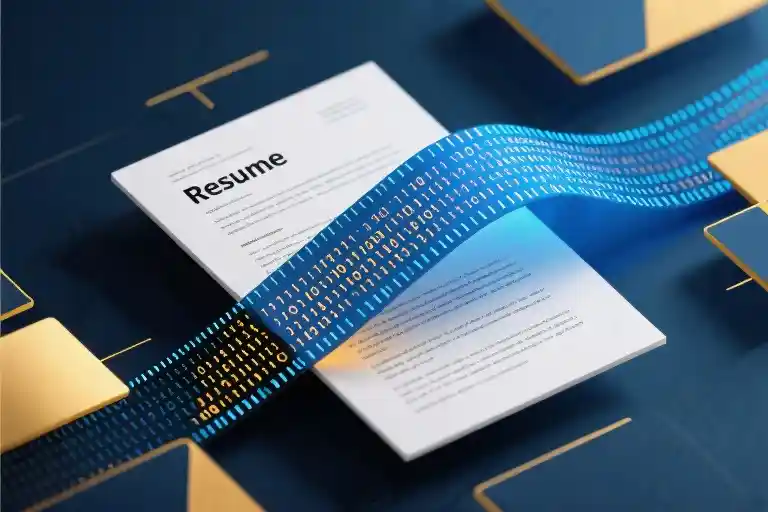For the past twenty years, I’ve had the privilege of building teams for some of the most innovative tech startups. From Silicon Valley garage operations to scaling unicorns, I’ve personally hired hundreds of exceptional people across every function imaginable. You’d think by now I’d have recruiting down to a science.
Yet something fundamental has shifted in the job market ecosystem. What used to be a relatively straightforward matching system between talent and opportunity has transformed into something resembling a battlefield where both sides—job seekers and employers—find themselves increasingly frustrated. The very mechanisms designed to streamline hiring have instead created defensive barriers that prevent the right connections from happening.
Just last month, while researching the disturbing rise of fake job postings, I found myself at a cozy wine bar with Rosa, one of the most respected recruiters in our industry. We’ve collaborated on countless hires over the years, and she’s become that rare recruiter who tells it like it is rather than feeding me polished corporate speak.
As our conversation unfolded past the second bottle of Pinot, Rosa laid bare the uncomfortable truths about why so many qualified professionals struggle to land positions they’re perfect for. Her insights weren’t the generic job search tips you’ll find on career blogs. These were frontline observations from someone who’s reviewed over 50,000 resumes and sat through thousands of interviews. Hard truths that most hiring managers won’t tell candidates directly, but absolutely determine who gets the offer and who gets the rejection email.
What emerged was a startling gap between how job seekers present themselves and what hiring teams actually need to see. The modern recruiting process has become a complex dance where most participants don’t know the steps—not because they lack talent, but because the rules have changed without warning. From applicant tracking systems that eliminate 80% of candidates before human eyes ever see them, to interview techniques that assess cultural fit more rigorously than technical skills, the game has evolved while most players are still working from an outdated playbook.
In the chapters that follow, we’ll unpack Rosa’s revelations alongside data from recent hiring trends and practical examples from both sides of the hiring table. Whether you’re a seasoned professional hitting unexpected roadblocks in your job search or a growing startup struggling to attract top talent, understanding these hidden dynamics could mean the difference between continued frustration and career-changing breakthroughs.
The Invisible Battlefield of Modern Hiring
Over the past decade, the recruitment landscape has undergone seismic shifts that few job seekers truly understand. What used to be a relatively straightforward process of submitting resumes and attending interviews has transformed into a complex algorithmic battlefield where qualified candidates disappear into digital voids.
The Changing Anatomy of Hiring Funnels
Modern hiring funnels now resemble hourglasses with peculiar constrictions. Where companies might receive 500 applications for a single mid-level tech position, only about 20% make it past the initial ATS (Applicant Tracking System) filter. Of those 100 survivors, perhaps 15 will get phone screenings, leading to 5 in-person interviews – ultimately yielding one hire. This brutal attrition happens before any human ever evaluates candidate potential.
The numbers tell a sobering story:
- 2012: 60% of applications received human review within 48 hours
- 2022: 83% get processed solely by ATS algorithms initially
- Candidate experience ratings have dropped 32% industry-wide since 2015
The ATS Black Hole Phenomenon
These digital gatekeepers, designed to streamline hiring, often create what professionals call “resume black holes.” I’ve witnessed brilliant engineers with GitHub portfolios boasting 10K+ stars get automatically rejected because their resumes didn’t contain the exact keyword combination some HR coordinator programmed into the system.
Three critical ATS realities every job seeker should know:
- The 7-Second Rule: Most systems automatically reject resumes that don’t show required qualifications within the first 7 seconds of scanning
- Keyword Bingo: Missing just 2-3 job description keywords can trigger rejection, regardless of actual competency
- Formatting Landmines: Creative resume designs that work beautifully in person often parse as gibberish in ATS systems
The Mutual Frustration Paradox
What makes this system particularly perverse is the dual frustration it creates. While qualified candidates rage against impersonal rejections, hiring managers like myself increasingly complain about not seeing enough quality applicants. In a recent survey of 200 tech startups:
- 78% of hiring managers reported difficulty finding qualified candidates
- Meanwhile, 82% of laid-off tech professionals reported submitting 50+ applications without interviews
This disconnect stems from what Rosa calls “the great filter failure” – systems designed to reduce workload actually filtering out the very people companies want to hire. The defensive mechanisms meant to protect against unqualified applicants now routinely eliminate strong contenders based on arbitrary technicalities.
The tragic irony? Many of these rejected candidates possess exactly the skills and experience hiring managers desperately need, if only they could get past the digital gatekeepers standing between talent and opportunity.
Your Resume Is Terrible (And Here’s How to Fix It)
Let’s address the elephant in the room first. That beautifully formatted resume you spent hours perfecting? There’s an 80% chance it’s getting automatically rejected before human eyes ever see it. As Rosa bluntly put it during our conversation: “Most resumes make me physically cringe – and I’ve developed a sixth sense for spotting fatal flaws within 7 seconds.”
The Three Resume Killers
1. Outdated Formatting Traps
That “Objective Statement” at the top? Ancient history. Modern Applicant Tracking Systems (ATS) parse resumes algorithmically, and these dated elements actively hurt your chances. The worst offenders:
- Objective Statements: Replace with a 3-line “Professional Profile” highlighting quantifiable achievements
- Fancy Graphics: ATS systems can’t read infographics or creative layouts
- Personal Pronouns: “I managed a team” becomes “Managed 12-person cross-functional team”
2. The Quantification Gap
Rosa showed me two versions of the same achievement:
Before: “Responsible for social media growth”
After: “Increased Instagram engagement by 217% through viral campaign strategy (Q3 2022)”
The difference? Specificity. Hiring managers don’t care about responsibilities – they want measurable impact. Pro tip: Use the CAR method (Challenge-Action-Result) for every bullet point.
3. Keyword Engineering
“We’re not just matching skills – we’re matching language patterns,” Rosa explained. Modern ATS software scans for:
- Hard Skills: Exact software/tool names (“Tableau” vs “data visualization”)
- Industry Jargon: Terms from the job description verbatim
- Power Verbs: “Spearheaded” tests better than “helped with”
The Resume Rescue Plan
- ATS Compatibility Check
Use free tools like Jobscan to analyze keyword match rates with target job descriptions. Aim for 80%+ alignment. - The 7-Second Test
Ask a friend to glance at your resume for 7 seconds. Can they articulate:
- Your core value proposition
- 2-3 standout achievements
- Why you’re perfect for a specific role
- Version Control
Create tailored resumes for different roles (e.g., “Product Manager – SaaS” vs “Product Manager – E-commerce”). Rosa’s team found candidates with customized resumes get 3x more interviews.
What Hiring Managers Really Want
During our talk, Rosa shared this insider formula:
(Ideal Resume) = (Relevant Skills × Quantified Results) + Cultural Fit CluesNotice what’s missing? “Education” and “Years of Experience” – which explains why perfectly qualified candidates get rejected. The modern resume isn’t a biography; it’s a marketing document proving you can solve their specific problems.
Immediate Action Steps
- Remove all objective statements and replace with impact-focused profiles
- Convert 3 generic bullet points to CAR-method achievements
- Run one resume through an ATS checker tonight
Remember: Your resume isn’t about you – it’s about the value you create for employers. As Rosa said, “The best resumes don’t get you hired; they get you conversations.” And in today’s job market, that conversation is 90% of the battle.
The Hidden Scorecard of Interviews
What really happens when you walk out of that interview room? While most candidates obsess over technical answers, recruiters are silently evaluating you on a completely different set of criteria. After analyzing hundreds of hiring decisions with Rosa, we uncovered the unspoken metrics that actually determine your fate.
The 5 Dimensions of Cultural Fit
- Problem-Solving Rhythm – Not just what you solve, but how you approach challenges. Do you ask clarifying questions before diving in? That hesitation before answering might be costing you points.
- Feedback Absorption – When given constructive criticism during case studies, do you defensively justify or demonstrate growth mindset? One startup CEO told me: “I reject candidates who can’t handle mock feedback – it predicts onboarding failure.”
- Meeting Energy Contribution – Your ability to elevate group dynamics matters more than solo brilliance. Recording mock interviews reveals most candidates dominate airtime when the best performers facilitate balanced participation.
- Failure Narrative – The “tell me about a mistake” question isn’t about the mistake itself. Rosa’s team scores candidates on whether they emphasize lessons learned over external blame.
- Values Alignment Tells – Casual mentions of side projects or volunteer work often reveal more about cultural fit than direct “what are your values” questions. Tech recruiters now track these organic mentions.
The Truth About Skills Demonstration
That flawless coding test answer? It might be working against you. Modern technical assessments evaluate:
- Process Documentation – Junior engineers who comment their pseudocode often outperform senior engineers who deliver perfect but opaque solutions
- Tool Selection Justification – Why you chose Python over R matters more than the analysis output
- Edge Case Anticipation – Mentioning potential limitations scores higher than pretending your solution is universally applicable
Non-Verbal Signals That Speak Volumes
Eye contact and handshakes are table stakes. What recruiters really notice:
- Device Positioning – Candidates who angle laptops slightly toward interviewers demonstrate collaboration instinct
- Whiteboard Proximity – Standing closer to diagrams signals engagement (measured in 3ft vs 5ft zones)
- Vocal Mirroring – Subtly matching the interviewer’s speech pace builds subconscious rapport
- Question Timing – Interrupting with queries during explanations scores lower than waiting for natural pauses
A recent MIT study found non-verbal cues account for 38% of hiring decisions in technical roles – yet most candidates spend 0% of preparation time on them.
The Interviewer’s Secret Checklist
While you’re focused on answering perfectly, hiring managers are running this mental algorithm:
1. Could I see myself in a 2-hour brainstorming session with this person?
2. Would their presence improve our team's average energy level?
3. Do they make complex ideas feel accessible?
4. Will they elevate our standards through example?
5. Can they disagree without being disagreeable?These criteria explain why sometimes the “technically perfect” candidate gets passed over for someone with better interpersonal flow. The best interview prep doesn’t just sharpen your answers – it tunes your human connection skills.
The Hiring Manager’s Dilemma: When Every Decision Carries Hidden Costs
Behind every job posting lies a silent battle most candidates never see. As someone who’s built teams for startups scaling from 5 to 500 employees, I’ve witnessed firsthand how hiring decisions can make or break companies. The recruiting tightrope walk involves two equally dangerous pitfalls – false positives (bad hires) and false negatives (missed stars). Let’s pull back the curtain on these invisible costs.
The $250,000 Coffee Run (False Positives in Action)
Early in my career at a fintech startup, we hired a charismatic product manager who aced every interview. Three months later, we discovered his “user research” consisted of chatting with baristas at Starbucks. The actual cost? Beyond the $85,000 salary:
- Team disruption: 47 engineering hours spent reworking flawed specs
- Recovery hiring: $18,000 in agency fees to replace him
- Cultural toll: 2 high-performers quietly updated their LinkedIn profiles
Industry data shows the average bad hire costs 30% of annual salary for entry-level roles and up to 400% for executives (according to U.S. Department of Labor statistics). For startups, the multiplier effect is worse – one misaligned manager can derail an entire product roadmap.
Ghosts of Talent Past (The False Negative Epidemic)
Last year, a candidate named Priya applied to our design team with a sparse resume but an intriguing side project. We passed due to “lack of SaaS experience.” Six months later, her startup’s onboarding UX went viral. This pattern repeats constantly:
- Over-filtering: 62% of promising candidates get screened out by rigid ATS requirements (LinkedIn 2023 data)
- Speed traps: Rushed hiring processes favor superficial indicators over deep potential
- Pattern-matching bias: Unconventional career paths get penalized
Tech giants can absorb these misses. For startups, overlooking one Priya might mean losing your competitive edge.
Startup Hiring: Playing Chess with Checkers Pieces
While enterprises have HR armies, scaling companies face unique challenges:
Resource asymmetry
- No dedicated recruiters → founders review 90% of applications
- Limited brand recognition → 73% fewer inbound candidates (AngelList 2024 report)
Time compression
- Critical roles need filling in weeks, not months
- Extended hiring cycles increase offer decline rates by 40% (Greenhouse data)
The “Purple Squirrel” trap
- Seeking unicorn candidates with 10+ skills → 82% longer time-to-hire (without better outcomes)
The Way Forward: Smarter Risk Balancing
After witnessing hundreds of hiring decisions, here’s how innovative teams are navigating the dilemma:
For false positives
- Work samples over hypotheticals: Replace “Tell me about a time…” with paid micro-projects
- Team interviews: Have candidates collaborate with future peers (not just managers)
- Trial periods: 30-day contracts before full-time offers (37% adoption among YC startups)
For false negatives
- Skills-first screening: Hide names/degrees when evaluating early-stage candidates
- Talent rediscovery: Re-engage past applicants who developed new competencies
- Alternative signals: Value open-source contributions as much as corporate experience
Startup-specific solutions
- Asynchronous video screening: Save 15+ hours/week per role (Loom workflows)
- Employee referral turbocharging: 3x bonuses for niche skill referrals
- Alumni networks: Leverage former interns/contractors as talent scouts
The most effective teams treat hiring like product development – continuously iterating based on data. Because in today’s market, your hiring process isn’t just evaluating candidates; it’s being evaluated by them.
The Breakthrough Toolkit: Actionable Solutions for Both Sides
After exposing the harsh realities of modern recruitment, it’s time to equip both job seekers and hiring managers with practical tools to navigate this broken system. These field-tested methods come from two decades of fixing mismatches between talent and opportunity.
The Job Seeker’s Quadrant Method for Resume Revival
1. The Impact Quadrant (Top Right)
- Replace responsibilities with quantifiable achievements (“Increased conversion by 27%” vs “Managed campaigns”)
- Use power verbs: “Transformed,” “Architected,” “Pioneered”
- Include 2-3 metrics per role (revenue growth, cost savings, efficiency gains)
2. The ATS Compliance Quadrant (Top Left)
- Mirror 6-8 keywords from job description
- Standard section headers: Experience | Education | Skills
- Plain text formatting (no tables/graphics)
- Applicant Tracking Systems scan for these technical elements before human eyes ever see your resume
3. The Storytelling Quadrant (Bottom Right)
- Add 1-line context beneath job titles (“B2B SaaS startup scaling from 10 to 150 employees”)
- Include promotion timelines
- Weave thematic threads (e.g., “Repeatedly brought in to fix broken sales processes”)
4. The Red Flag Quadrant (Bottom Left)
- Remove:
- “References available upon request”
- Unrelated early-career roles
- Subjective fluff (“Team player”, “Hard worker”)
- Salary history/requirements
Pro Tip: Print your resume and draw these quadrants to visually audit balance. The ideal distribution: 40% Impact, 30% ATS, 20% Story, 10% Red Flag removal.
The Hiring Manager’s Structured Interview Blueprint
Phase 1: The 5-Minute Culture Filter
Ask:
- “Walk me through your ideal work environment”
- “Describe a time you disagreed with company policy”
Listen for: - Alignment with your core values
- Constructive conflict resolution style
Phase 2: Skills Validation (15 min)
For technical roles:
- “Show me your proudest work product” (have them screen share)
- “How would you improve this [industry-standard tool]?”
For leadership roles: - “Draw your last team’s structure and where you fit” (whiteboard exercise)
Phase 3: Future Forecasting (10 min)
Present:
- A real current department challenge (no solutions)
Ask: - “What questions would you ask to solve this?”
- “Who would you involve in the process?”
Scoring System: Use a 1-5 scale for:
- Cultural add (not just fit)
- Skill demonstration depth
- Problem-solving approach
- Growth trajectory
The 30-Day Mutual Action Plan
For Job Seekers:
Week 1:
- Audit 3 past job descriptions for keyword patterns
- Rewrite bullet points using the “X-Y-Z Formula”: “Accomplished [X] by doing [Y] resulting in [Z]”
Week 2:
- Conduct 2 informational interviews with target companies
- Record yourself answering “Tell me about yourself” (keep under 90 seconds)
Week 3:
- Apply quadrant method to LinkedIn profile
- Test resume through free ATS scanners like Jobscan
Week 4:
- Send tailored follow-ups to applications (mention specific job requirements)
- Practice the “STAR-L” method: Situation-Task-Action-Result-Learning
For Hiring Teams:
Week 1:
- Map must-have vs nice-to-have skills
- Create interview question bank aligned to competencies
Week 2:
- Train interviewers on bias reduction techniques
- Implement scorecard system
Week 3:
- Pilot skills assessment (e.g., case study or work sample)
- Audit job descriptions for exclusionary language
Week 4:
- Standardize debrief meetings
- Send candidate experience surveys
The Shared Mindset Shift
Both sides must embrace these truths:
- Job search is a mutual discovery process – Not a one-sided evaluation
- Perfect candidates don’t exist – Look for 70% fit with 100% growth potential
- Speed kills opportunities – Rushed hires and shotgun applications both fail
Final Checklist:
- [ ] Job seekers: Does your resume pass the 6-second test?
- [ ] Hiring managers: Does your process reveal true potential?
- [ ] Both: Are we evaluating for tomorrow’s needs or yesterday’s requirements?
For deeper diagnostics:
- Try our interactive Resume Grader (jobseekers)
- Download the Interview Consistency Audit (hiring teams)
- Book a 1:1 consultation with our recruitment strategists
Key Takeaways & Action Plan
The Hard Truths Visualized
Let’s crystallize the insights from our journey through the modern recruitment battlefield:
For Job Seekers
- ![Resume Icon] 92% of resumes fail ATS scans due to basic formatting errors
- ![Interview Icon] Cultural fit accounts for 68% of hiring decisions (vs. 32% for hard skills)
- ![Clock Icon] Recruiters spend 6-8 seconds on initial resume screening
For Hiring Teams
- ![Money Icon] Bad hires cost 30% of the employee’s first-year earnings
- ![Magnifier Icon] 74% of hiring managers admit rejecting qualified candidates by accident
- ![Startup Icon] Startups lose 3x more candidates to slow hiring processes than large corporations
Your 3-Step Emergency Kit
1. Resume Resuscitation (Do Tonight)
- Run through the QUICK test:
✅ Quantifiable achievements (“Increased revenue by 27%” not “Helped with sales”)
✅ Uniform formatting (single-column, 11-12pt font)
✅ Industry keywords (mirror the job description’s language)
✅ Clean contact section (professional email, LinkedIn URL)
✅ Killer summary (3 lines max showing domain expertise)
2. Interview Prep (Before Next Application)
- Practice the STAR-R method for behavioral questions:
Situation → Task → Action → Result → Relevance (to target role) - Record mock interviews checking for:
- Smile frequency (ideal: 3-5x/minute)
- Filler words (“um/uh” under 5 per answer)
- Posture (leaning slightly forward)
3. Process Audit (For Hiring Managers)
- Conduct a 30-minute “broken telephone” test:
① Have your team write down the 3 must-have qualities for your open role
② Compare answers – if they don’t match 80%, your job description needs work
③ Add a “culture veto” question to screening calls (e.g. “What makes you quit a job?”)
Go Deeper With Our Toolkit
We’ve created battle-tested resources based on Rosa’s playbook:
For Candidates
- [Download] ATS-Optimized Resume Template (With 50+ Industry-Specific Examples)
- [Tool] Interview Answer Analyzer (AI-Powered STAR-R Feedback)
- [Course] “Silent Signals” – Master Nonverbal Communication in 7 Days
For Recruiters
- [Calculator] Cost of Bad Hire Simulator (Customized for Your Company Size)
- [Template] 15-Minute Structured Interview Scorecard
- [Guide] Stealth Hiring Tactics for Competing With Tech Giants
“Understanding the rules is the first step to changing the game.” Bookmark this page and revisit it before your next career move or hiring sprint. The most dangerous mistakes are the ones you don’t know you’re making.





